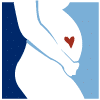Osteoporosis, a common condition characterized by fragile, weakened bones, affects over 3 million people in the United States each year. Osteoporosis is five times more likely to occur in women than in men.
Osteoporosis
What Causes Osteoporosis?
Multiple factors can cause osteoporosis, but your lifestyle can have a major part in developing osteoporosis as you age.
These risk factors include:
- Certain diseases, such as lupus, rheumatoid arthritis, or inflammatory bowel disease
- Certain medications
- Alcohol (three or more drinks a day)
- Lack of physical activity
- Low calcium intake
- Menopause
- Smoking
- Vitamin D insufficiency
- Being thin
Menopause and Osteoporosis
After menopause, the ovaries produce very little estrogen, which protects against bone loss. This decrease in estrogen signals a period of significant, rapid bone loss that starts a year before the final menstrual period and can last up to a year.
Bone Mineral Density Test
A bone mineral density (BMD) test determines bone density levels at the hand, heel, hip, spine or wrist. All women 65 and older should have a BMD test. Women who are younger than 65 and past menopause should have a BMD test if they have other risk factors for osteoporosis, outlined above.
There are many different ways to measure bone density, including a DEXA scan and a FRAX test.
DEXA Scan
A DEXA scan requires you to lay down for 3-10 minutes while a machine scans your body. After your test, you’re assigned a T-score, which determines your bone density in relation to an average 30 year old woman. A negative score means you have thinner bones, and a positive score means you have stronger bones than an average 30 year old woman.
If your T-score, at any site, is between -1 and -2.5, you are at an increased risk of developing osteoporosis. A score of -2.5 or lower means you have osteoporosis.
FRAX
FRAX determines your fracture risk by accounting for age, sex, body mass index (BMI), smoking, alcohol intake and other risk factors. The program predicts the risk of having a fracture in the next 10 years for women 40 and older (who are currently taking osteoporosis drugs).
Preventing Osteoporosis
Exercise and a healthy lifestyle are encouraged to prevent osteoporosis. Exercise increases bone mass before menopause and slows bone loss after menopause.
Incorporate weight-bearing exercise into your recommended 150 minutes of weekly exercise to prevent the onset of osteoporosis.
Good exercises to try include:
- Yoga
- Pilates
- Tai Chi
- Brisk walking
- Strength training (handheld weights, bands or using bodyweight)
A diet of leafy greens, like spinach, kale, and collards; dairy foods, like milk, yogurt and cheese; as well as salmon and sardines are great sources of much-needed calcium for prevention of bone loss.
Sylacauga OB-GYN, Helping You with Osteoporosis
If you feel you’re at risk for developing osteoporosis, we recommend scheduling an appointment with us. We can discuss your lifestyle, potential risk factors, and if a test is necessary to determine if you’re at risk for developing osteoporosis.


